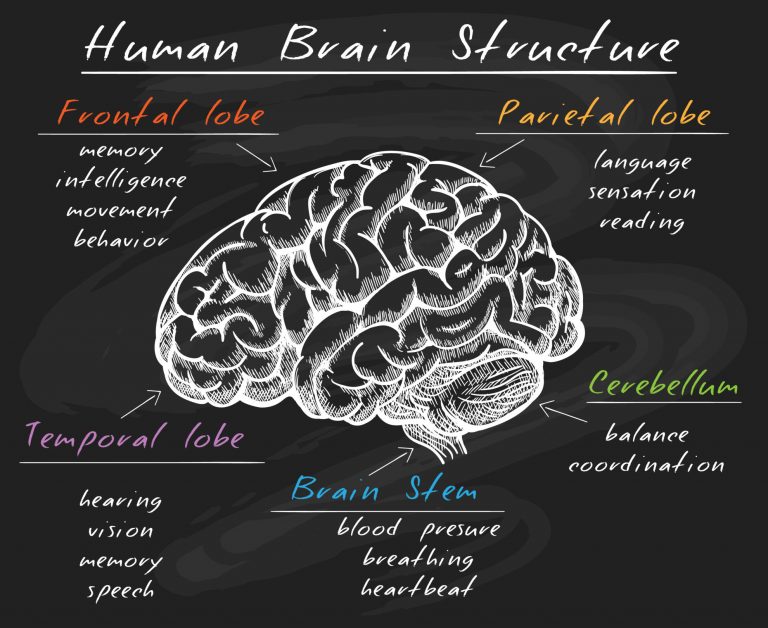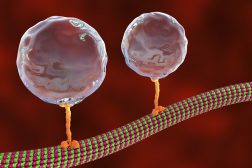The Conscious & Unconscious Nervous System

The central nervous system controls the biological processes of our body and all conscious thought.
Table of Contents
The Central Nervous System is arguably the most important part of the body because of the way it controls the biological processes of our body and all conscious thought. Due to their importance, they are safely encased within bones, namely the cranium protecting the brain and the spine protecting the spinal cord
Brain Divisions
There are three main components of the brain, namely the brainstem, cerebellum and the forebrain. These are elaborated upon below:
- The Brainstem – The lowest part of the brain, which merges with the spinal cord. It consists of the medulla oblongata, midbrain and pons. The brainstem is the connection between the rest of the brain and the rest of the central nervous system. This part of the brain was the first to be found in the evolutionary chain, though has developed over time and via evolution to develop into the two other components. It is primarily concerned with life support and basic functions such as movement, thus meaning that more advanced processes are left to the more evolved areas of the brain, as explained below.
- The Cerebellum – Consisting of two hemispheres, the cerebellum is primarily concerned with somatic motor function, the control of muscle tone and the maintenance of balance. The structure can be found below the occipital lobe and adjacent to the brainstem.
- The Forebrain – The anterior of the three principal divisions of the brain, including the prosencephalon and thalamencephalon. The forebrain lies above the brainstem and cerebellum and is the most advanced in evolutionary terms.
The Forebrain
The forebrain has many activities that it is responsible for and is divided into many component parts. The below list elaborates on the localized areas of the forebrain and their functions.
The Hypothalamus – A section of the brain found next to the thalamus that is involved in many regulatory functions such as osmoregulation and thermoregulation. The hypothalamus has a degree of control over the pituitary gland, another part of the brain situated next to it, and also controls sleeping patterns, eating and drinking, and speech. The hypothalamus is also responsible for the secretion of ADH (Anti-Diuretic Hormone) via its neurosecretory cells
The Cerebrum – The cerebrum is the largest part of the human brain, and the part responsible for intelligence and creativity, and also involved in memory. The ‘grey matter’ of the cerebrum is the cerebral cortex, the center that receives information from the thalamus and all the other lower centers in the brain.
The Cerebral Cortex – Part of the cerebrum, this part of the brain deals with almost all of the higher functions of an intelligent being. It is this part of the brain that deals with the masses of information incoming from the periphery nervous system, furiously instructing the brain of what is going on inside its body and the external environment. It is this part that translates our nervous impulses into understandable quantifiable feelings and thoughts. So important is the cerebral cortex that it is sub-divided into 4 parts, explained below:
- Frontal Lobe – Found at the front of the head, near the temples and forehead, the frontal lobe is essential to many of the advanced functions of an evolved brain. It deals with voluntary muscle movements and deals with more intricate matters such as thought and speech
- Parietal Lobe – Situated behind the frontal lobe, this section deals with spatial awareness in the external environment and acts as a receptor area to deal with signals associated with tough.
- Temporal Lobe – The temporal lobes are situated in parallel with the ears, they serve the ears by interpreting audio signals received from the auditory canal
- Occipital Lobe – This is the smallest of the four-lobe components of the cerebrum, and is responsible for interpreting nerve signals from the eye at the back of the brain
The above components of the brain work in tandem in a healthy brain. However, in some cases the brain can be injured in some way, causing brain damage. The next tutorial The Central Nervous System looks at how brain damage can affect the way we operate.
Test your knowledge: Brain Anatomy Quiz & Brain Function Quiz
You will also like...

Genetic Engineering Advantages & Disadvantages
This tutorial presents the benefits and the possible adverse eventualities of genetic engineering. Know more about this ..

Ecological Research: Measuring & Analysis
This lesson is about the methods used for ecological research, such as quadrat and transect sampling, canopy fogging, an..

Human Reproduction and Fertilization
For human species to obviate extinction, reproductive mature adults should be producing viable offspring in order to con..

Examples of Natural Selection
Darwin's Finches are an example of natural selection in action. They are an excellent example of the way species' gene p..

Movement of Molecules Across Cell Membranes
Molecules move within the cell or from one cell to another through different strategies. Transport may be in the form of..

Bryophytes
Bryophytes (nonvascular plants) are a plant group characterized by lacking vascular tissues. They include the mosses, th..
